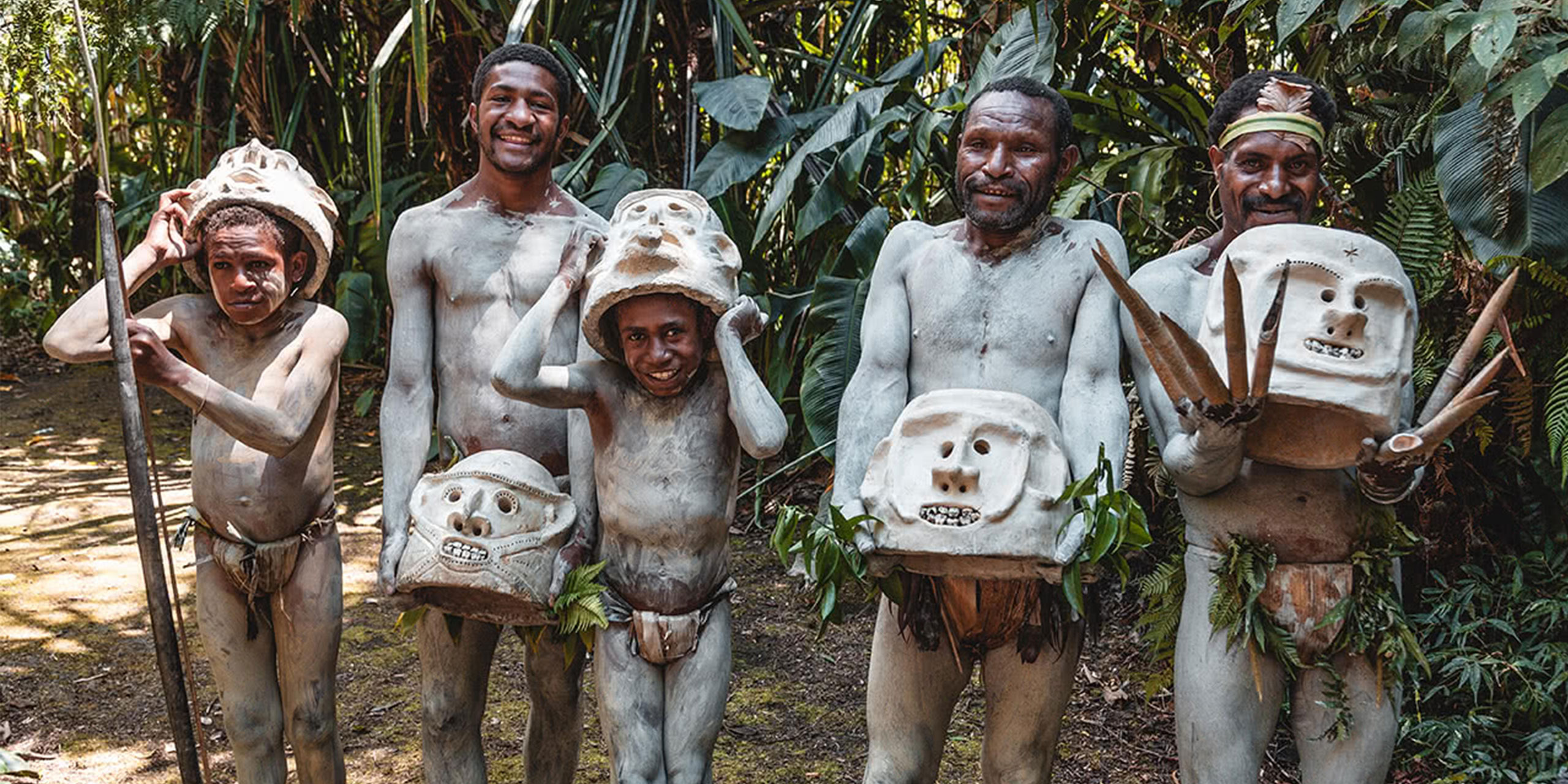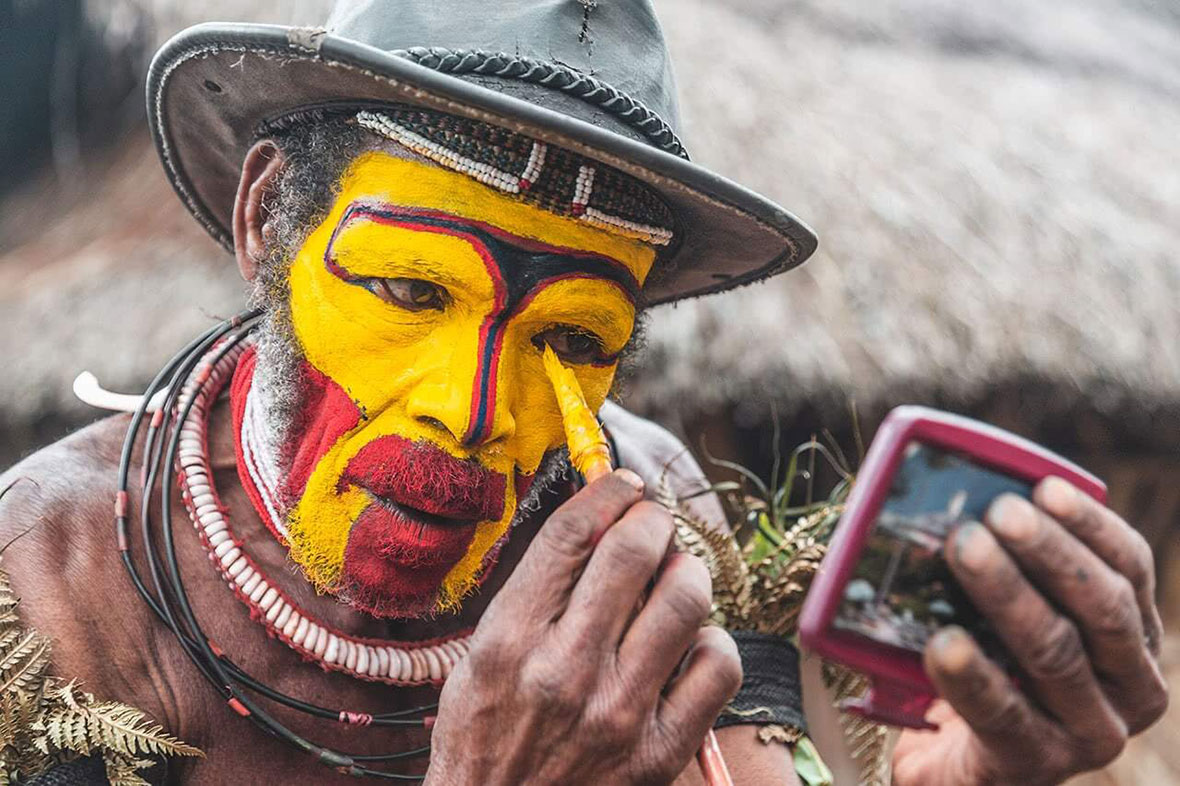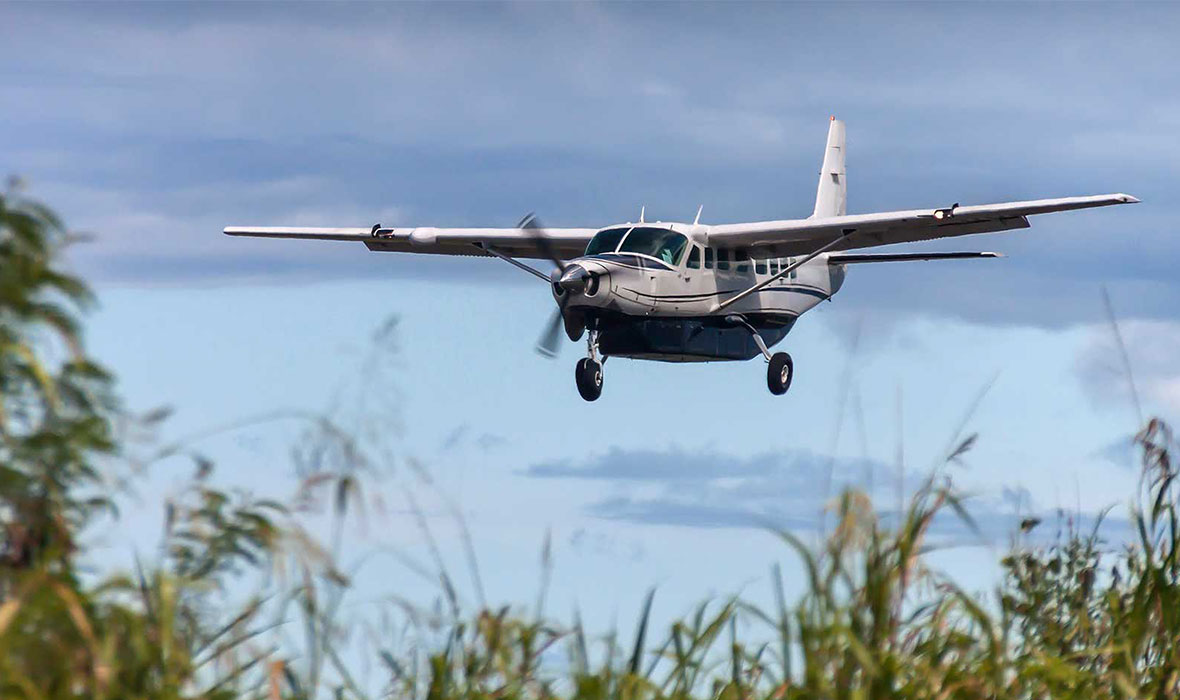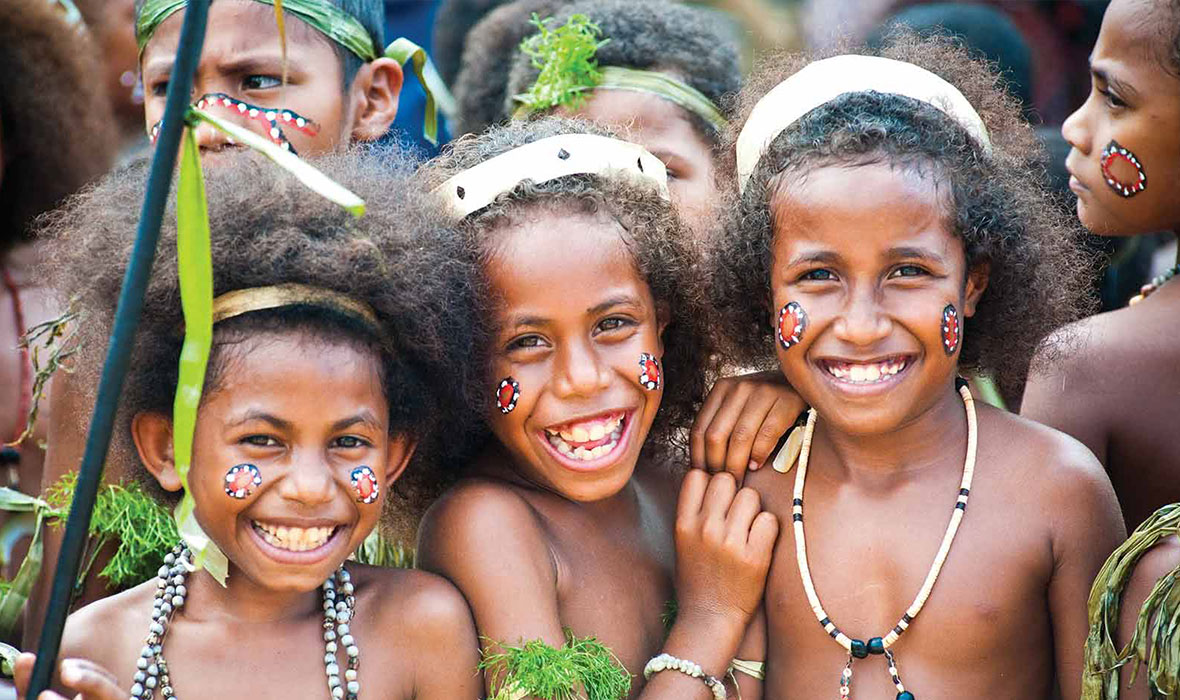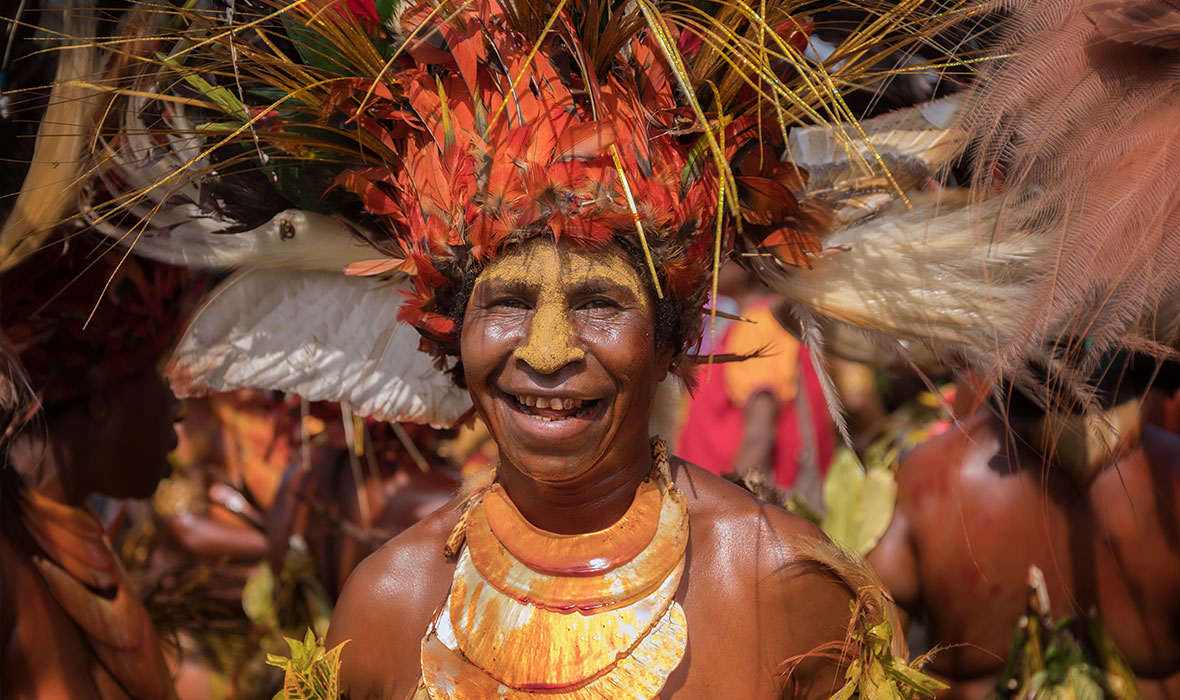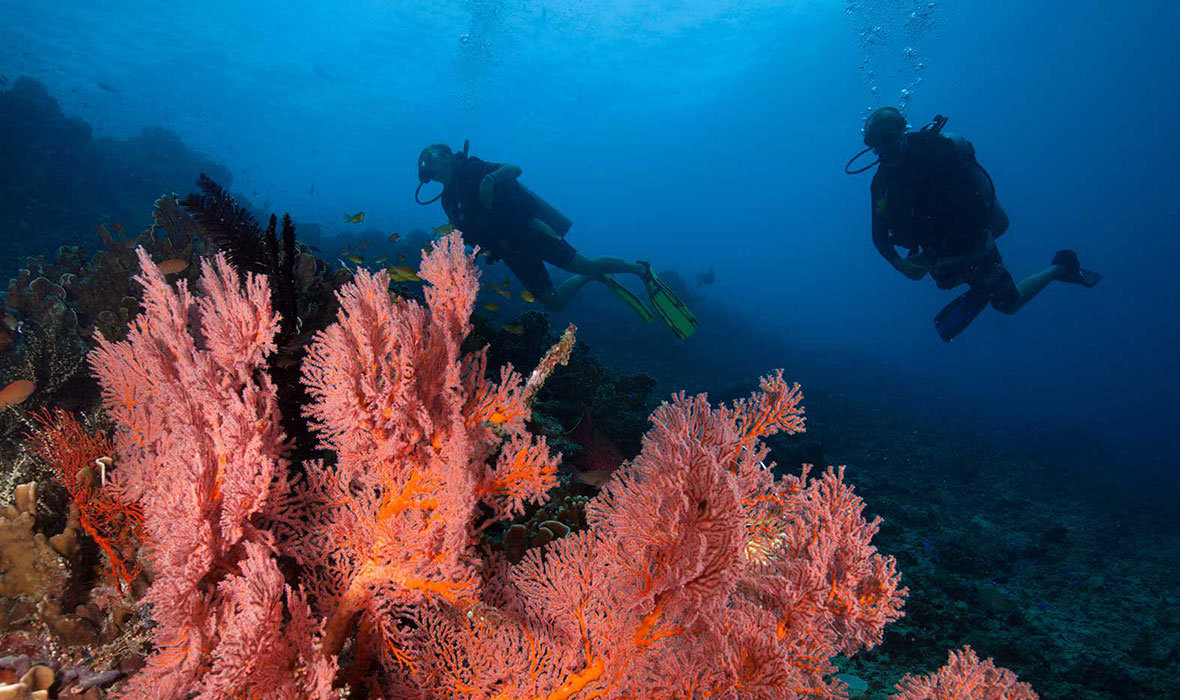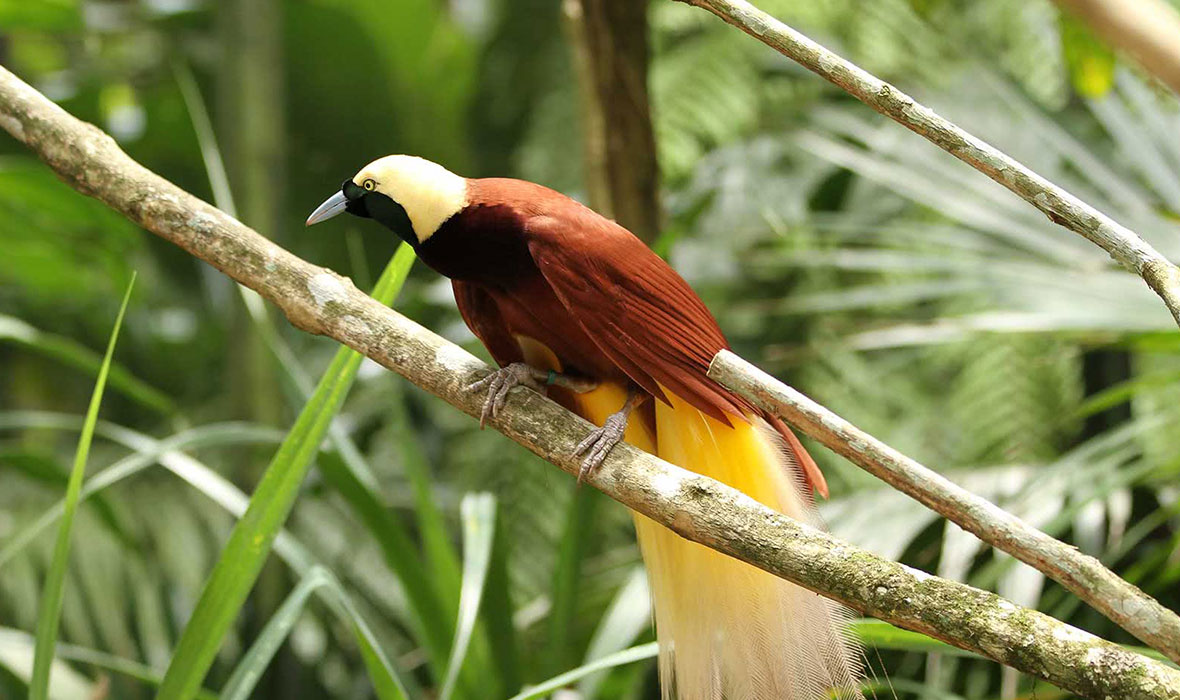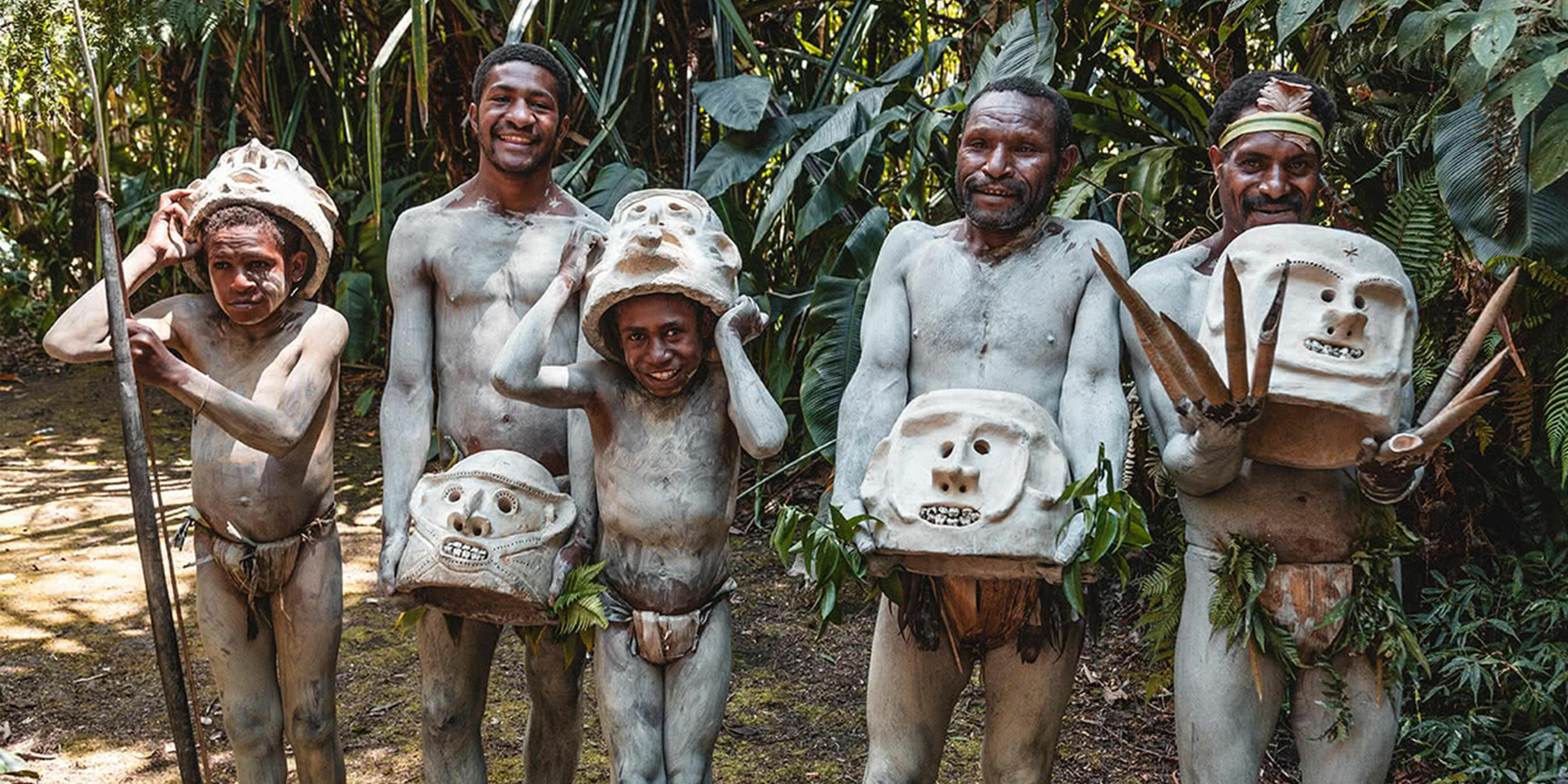
One of the most wild, fascinating parts of Asia, Papua New Guinea is a travel frontier for hikers, birdwatchers, and divers. The relatively untouched jungles and highlands of PNG are a haven for wildlife and a diverse array of tribal cultures unlike anywhere else in the world.
This 13-day journey takes travelers on a breathtaking expedition through some of Papua New Guinea’s most remote locations — Tari in the Southern Highlands and the Sepik River — for tribal Wigmen, beaches, and jungle.
Travelers take a motorized canoe down the Sepik River — known for its vibrant wildlife and isolated river cultures — to explore the riverside villages among the rainforest and mangroves as they explore Papua New Guinea. A little known treasure of PNG are the beaches, specifically those of Wewak and Madang, where travelers will find rich underwater sea life and crystal clear water for snorkeling and diving.
First known to Westerners in 1934, the Huli Wigmen of Hela Province are known for their distinctive face makeup and ornate headdresses, decorating themselves with the colorful plumage of the birds of paradise. While in a Huli village, travelers are treated to a traditional sing-sing.
Traveling by private plane, travelers will camp, trek, and meet with tribes on a 10-day trip that will take guests to corners of Papua New Guinea in style.
Skip the long drives normally associated with Papua New Guinea and jet around the landscapes, tribes, and wildlife of the most mysterious nation in Asia, travelers will meet the trek into the dense rainforest to find the Abelam Tribe. Yams are important to this Sepik region tribe — very important. The size of the yams here, which can grow to more than two meters long, can determine a village’s status within the local hierarchy.
The endemic birds of Papua New Guinea helped Alfred Russel Wallace found the theory of evolution alongside Charles Darwin. Travelers will find rare — and strange — specimens in the Sepik and Yuat Valley regions.
Join the Crocodile Festival featuring the tribal cultures of the Sepik River on a 12-day journey that will see travelers from the highlands to WWII wreck diving under the waves.
Kaironk River Valley is famed for its many archeological sites, and travelers will trek over steep spurs, pig fences, and stream crossings to reach isolated dig sites and villages. Along the way, travelers will attend the Crocodile Festival in August, featuring the tribal cultures of the Sepik River, most famously the Crocodile Men of Palembei, Yentchen, and Kanganaman. Some of these tribes use ritual scarification of the back and arms as a rite of passage for young men, producing patterns that look like the scales on a crocodile.
A lot of travelers don’t know PNG is a diving destination. Awash in abundant sealife, clear water, and wreck dives from WWII, Papua New Guinea is a unique diving destination. In Lauadi, divers will explore life under the waves and keep an eye out for whale sharks and hammerheads.
One of the most highly anticipated cultural events in all of Asia, this 14-day itinerary built around the Goroka Cultural Show will take travelers around Papua New Guinea for canoeing, hiking, and meeting tribal chieftains.
If you see one sing-sing in your life, it should probably be this one. Around 100 tribes show up for the biggest tribal festival in Papua New Guinea, the Goroka Show. Normally held in September, this “sing-sing” highlights the varied cultures of the region and travelers get a front row seat to the costumes, dances, and practices of these tribes.
Along the way, travelers will meet tribal Chiefs and learn about the fascinating and diverse cultures of Papua New Guinea by visiting with tribal chiefs in Omrakan, Mount Hagen, and Tambul.
Above water and below, this 10-day Papua New Guinea expedition will take travelers from the skies and trees of the rainforest to the beachside at Port Moresby.
Your adventure today begins with a full day of hiking through the exciting Kaironk River Valley, famous for its wealth of archaeological digs. The challenging hike, which takes you over steep spurs, pig fences, and stream crossings, is well worth the effort. Along the way, you’ll likely be greeted by friendly local tribespeople crossing your path. At the end of the day, rest your tired feet once again at Simbai Village Guest House. No roads lead to Simbai; the only way in is by private charter. Here, travelers will discover the Kaironk River Valley and the unique people and wildlife which call this region home. Throughout the journey, birdwatchers and wildlife lovers will be amazed. Then, it’s off to Madang for beaches, culture, and nature.
This thrilling 12-day Papua New Guinea itinerary will take travelers up-close to the country’s native wildlife, including deer, wallabies, snakes and the nation’s famed birds of paradise.The unique birds of Papua New Guinea helped Alfred Russel Wallace found the theory of evolution alongside Charles Darwin. Travelers will find the most visually impressive — and strange — specimens on the planet in Kiunga, the Tari Valley, and Bensbach.
Away from the tree tops, travelers can look for deer, wallabies, snakes, and monitor lizards as they explore the culture and dense jungles, rivers, and highlands of Papua New Guinea. For the anglers, there’s nowhere quite like wild Papua New Guinea. Join the pelicans and sea eagles in looking for life in the mysterious waters of the Bensbach.

